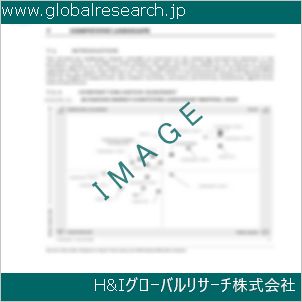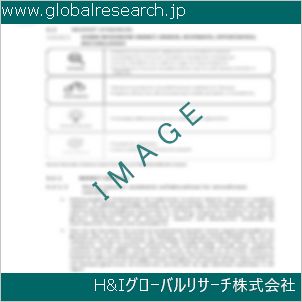1 TPMS Sensors Market Overview
1.1 Product Definition
1.2 TPMS Sensors Segment by Type
1.2.1 Global TPMS Sensors Market Value Growth Rate Analysis by Type 2022 VS 2029
1.2.2 Programable Sensors
1.2.3 Pre-loaded Sensors
1.3 TPMS Sensors Segment by Application
1.3.1 Global TPMS Sensors Market Value Growth Rate Analysis by Application: 2022 VS 2029
1.3.2 OEMs
1.3.3 Aftermarket
1.4 Global Market Growth Prospects
1.4.1 Global TPMS Sensors Production Value Estimates and Forecasts (2018-2029)
1.4.2 Global TPMS Sensors Production Capacity Estimates and Forecasts (2018-2029)
1.4.3 Global TPMS Sensors Production Estimates and Forecasts (2018-2029)
1.4.4 Global TPMS Sensors Market Average Price Estimates and Forecasts (2018-2029)
1.5 Assumptions and Limitations
2 Market Competition by Manufacturers
2.1 Global TPMS Sensors Production Market Share by Manufacturers (2018-2023)
2.2 Global TPMS Sensors Production Value Market Share by Manufacturers (2018-2023)
2.3 Global Key Players of TPMS Sensors, Industry Ranking, 2021 VS 2022 VS 2023
2.4 Global TPMS Sensors Market Share by Company Type (Tier 1, Tier 2 and Tier 3)
2.5 Global TPMS Sensors Average Price by Manufacturers (2018-2023)
2.6 Global Key Manufacturers of TPMS Sensors, Manufacturing Base Distribution and Headquarters
2.7 Global Key Manufacturers of TPMS Sensors, Product Offered and Application
2.8 Global Key Manufacturers of TPMS Sensors, Date of Enter into This Industry
2.9 TPMS Sensors Market Competitive Situation and Trends
2.9.1 TPMS Sensors Market Concentration Rate
2.9.2 Global 5 and 10 Largest TPMS Sensors Players Market Share by Revenue
2.10 Mergers & Acquisitions, Expansion
3 TPMS Sensors Production by Region
3.1 Global TPMS Sensors Production Value Estimates and Forecasts by Region: 2018 VS 2022 VS 2029
3.2 Global TPMS Sensors Production Value by Region (2018-2029)
3.2.1 Global TPMS Sensors Production Value Market Share by Region (2018-2023)
3.2.2 Global Forecasted Production Value of TPMS Sensors by Region (2024-2029)
3.3 Global TPMS Sensors Production Estimates and Forecasts by Region: 2018 VS 2022 VS 2029
3.4 Global TPMS Sensors Production by Region (2018-2029)
3.4.1 Global TPMS Sensors Production Market Share by Region (2018-2023)
3.4.2 Global Forecasted Production of TPMS Sensors by Region (2024-2029)
3.5 Global TPMS Sensors Market Price Analysis by Region (2018-2023)
3.6 Global TPMS Sensors Production and Value, Year-over-Year Growth
3.6.1 North America TPMS Sensors Production Value Estimates and Forecasts (2018-2029)
3.6.2 Europe TPMS Sensors Production Value Estimates and Forecasts (2018-2029)
3.6.3 China TPMS Sensors Production Value Estimates and Forecasts (2018-2029)
3.6.4 Japan TPMS Sensors Production Value Estimates and Forecasts (2018-2029)
3.6.5 South Korea TPMS Sensors Production Value Estimates and Forecasts (2018-2029)
4 TPMS Sensors Consumption by Region
4.1 Global TPMS Sensors Consumption Estimates and Forecasts by Region: 2018 VS 2022 VS 2029
4.2 Global TPMS Sensors Consumption by Region (2018-2029)
4.2.1 Global TPMS Sensors Consumption by Region (2018-2023)
4.2.2 Global TPMS Sensors Forecasted Consumption by Region (2024-2029)
4.3 North America
4.3.1 North America TPMS Sensors Consumption Growth Rate by Country: 2018 VS 2022 VS 2029
4.3.2 North America TPMS Sensors Consumption by Country (2018-2029)
4.3.3 United States
4.3.4 Canada
4.4 Europe
4.4.1 Europe TPMS Sensors Consumption Growth Rate by Country: 2018 VS 2022 VS 2029
4.4.2 Europe TPMS Sensors Consumption by Country (2018-2029)
4.4.3 Germany
4.4.4 France
4.4.5 U.K.
4.4.6 Italy
4.4.7 Russia
4.5 Asia Pacific
4.5.1 Asia Pacific TPMS Sensors Consumption Growth Rate by Region: 2018 VS 2022 VS 2029
4.5.2 Asia Pacific TPMS Sensors Consumption by Region (2018-2029)
4.5.3 China
4.5.4 Japan
4.5.5 South Korea
4.5.6 China Taiwan
4.5.7 Southeast Asia
4.5.8 India
4.6 Latin America, Middle East & Africa
4.6.1 Latin America, Middle East & Africa TPMS Sensors Consumption Growth Rate by Country: 2018 VS 2022 VS 2029
4.6.2 Latin America, Middle East & Africa TPMS Sensors Consumption by Country (2018-2029)
4.6.3 Mexico
4.6.4 Brazil
4.6.5 Turkey
5 Segment by Type
5.1 Global TPMS Sensors Production by Type (2018-2029)
5.1.1 Global TPMS Sensors Production by Type (2018-2023)
5.1.2 Global TPMS Sensors Production by Type (2024-2029)
5.1.3 Global TPMS Sensors Production Market Share by Type (2018-2029)
5.2 Global TPMS Sensors Production Value by Type (2018-2029)
5.2.1 Global TPMS Sensors Production Value by Type (2018-2023)
5.2.2 Global TPMS Sensors Production Value by Type (2024-2029)
5.2.3 Global TPMS Sensors Production Value Market Share by Type (2018-2029)
5.3 Global TPMS Sensors Price by Type (2018-2029)
6 Segment by Application
6.1 Global TPMS Sensors Production by Application (2018-2029)
6.1.1 Global TPMS Sensors Production by Application (2018-2023)
6.1.2 Global TPMS Sensors Production by Application (2024-2029)
6.1.3 Global TPMS Sensors Production Market Share by Application (2018-2029)
6.2 Global TPMS Sensors Production Value by Application (2018-2029)
6.2.1 Global TPMS Sensors Production Value by Application (2018-2023)
6.2.2 Global TPMS Sensors Production Value by Application (2024-2029)
6.2.3 Global TPMS Sensors Production Value Market Share by Application (2018-2029)
6.3 Global TPMS Sensors Price by Application (2018-2029)
7 Key Companies Profiled
7.1 AirTech TPMS
7.1.1 AirTech TPMS TPMS Sensors Corporation Information
7.1.2 AirTech TPMS TPMS Sensors Product Portfolio
7.1.3 AirTech TPMS TPMS Sensors Production, Value, Price and Gross Margin (2018-2023)
7.1.4 AirTech TPMS Main Business and Markets Served
7.1.5 AirTech TPMS Recent Developments/Updates
7.2 Continental Automotive Systems
7.2.1 Continental Automotive Systems TPMS Sensors Corporation Information
7.2.2 Continental Automotive Systems TPMS Sensors Product Portfolio
7.2.3 Continental Automotive Systems TPMS Sensors Production, Value, Price and Gross Margin (2018-2023)
7.2.4 Continental Automotive Systems Main Business and Markets Served
7.2.5 Continental Automotive Systems Recent Developments/Updates
7.3 Dill Air Controls Products
7.3.1 Dill Air Controls Products TPMS Sensors Corporation Information
7.3.2 Dill Air Controls Products TPMS Sensors Product Portfolio
7.3.3 Dill Air Controls Products TPMS Sensors Production, Value, Price and Gross Margin (2018-2023)
7.3.4 Dill Air Controls Products Main Business and Markets Served
7.3.5 Dill Air Controls Products Recent Developments/Updates
7.4 John Dow Industries
7.4.1 John Dow Industries TPMS Sensors Corporation Information
7.4.2 John Dow Industries TPMS Sensors Product Portfolio
7.4.3 John Dow Industries TPMS Sensors Production, Value, Price and Gross Margin (2018-2023)
7.4.4 John Dow Industries Main Business and Markets Served
7.4.5 John Dow Industries Recent Developments/Updates
7.5 Regitar USA
7.5.1 Regitar USA TPMS Sensors Corporation Information
7.5.2 Regitar USA TPMS Sensors Product Portfolio
7.5.3 Regitar USA TPMS Sensors Production, Value, Price and Gross Margin (2018-2023)
7.5.4 Regitar USA Main Business and Markets Served
7.5.5 Regitar USA Recent Developments/Updates
7.6 Revolution Supply
7.6.1 Revolution Supply TPMS Sensors Corporation Information
7.6.2 Revolution Supply TPMS Sensors Product Portfolio
7.6.3 Revolution Supply TPMS Sensors Production, Value, Price and Gross Margin (2018-2023)
7.6.4 Revolution Supply Main Business and Markets Served
7.6.5 Revolution Supply Recent Developments/Updates
7.7 Schrader International
7.7.1 Schrader International TPMS Sensors Corporation Information
7.7.2 Schrader International TPMS Sensors Product Portfolio
7.7.3 Schrader International TPMS Sensors Production, Value, Price and Gross Margin (2018-2023)
7.7.4 Schrader International Main Business and Markets Served
7.7.5 Schrader International Recent Developments/Updates
7.8 Standard Motor Products
7.8.1 Standard Motor Products TPMS Sensors Corporation Information
7.8.2 Standard Motor Products TPMS Sensors Product Portfolio
7.8.3 Standard Motor Products TPMS Sensors Production, Value, Price and Gross Margin (2018-2023)
7.8.4 Standard Motor Products Main Business and Markets Served
7.7.5 Standard Motor Products Recent Developments/Updates
8 Industry Chain and Sales Channels Analysis
8.1 TPMS Sensors Industry Chain Analysis
8.2 TPMS Sensors Key Raw Materials
8.2.1 Key Raw Materials
8.2.2 Raw Materials Key Suppliers
8.3 TPMS Sensors Production Mode & Process
8.4 TPMS Sensors Sales and Marketing
8.4.1 TPMS Sensors Sales Channels
8.4.2 TPMS Sensors Distributors
8.5 TPMS Sensors Customers
9 TPMS Sensors Market Dynamics
9.1 TPMS Sensors Industry Trends
9.2 TPMS Sensors Market Drivers
9.3 TPMS Sensors Market Challenges
9.4 TPMS Sensors Market Restraints
10 Research Finding and Conclusion
11 Methodology and Data Source
11.1 Methodology/Research Approach
11.1.1 Research Programs/Design
11.1.2 Market Size Estimation
11.1.3 Market Breakdown and Data Triangulation
11.2 Data Source
11.2.1 Secondary Sources
11.2.2 Primary Sources
11.3 Author List
11.4 Disclaimer
| ※参考情報 TPMS(タイヤプレッシャー・モニタリング・システム)センサーは、車両のタイヤ内の空気圧を監視し、適切な空気圧を維持するための重要なデバイスです。空気圧が適正でない場合、車両の操縦性や安全性に影響を及ぼすため、TPMSは現代の自動車において不可欠なシステムとなっています。ここでは、TPMSセンサーの概念を詳しく解説します。 TPMSセンサーの定義に関して言えば、それは車両のタイヤの空気圧をリアルタイムで測定し、それに関する情報を運転者に提供するセンサーです。TPMSは、車両が走行中にタイヤの圧力を監視し、異常が発生した場合には警告を発する機能を持っています。このシステムは、タイヤのパンクや摩耗を防ぎ、運転の安全性を高めるためにデザインされています。 TPMSセンサーの特徴としては、まずその精度が挙げられます。これらのセンサーは非常に高い精度でタイヤの圧力を測定することができ、車両の安全走行に寄与します。また、TPMSは一般にワイヤレスで動作し、車両のオンボードコンピュータと連携してデータを送信します。このため、配線が不要で取付けやメンテナンスが比較的簡単であるという利点があります。 TPMSには主に二つの種類、すなわち「間接式TPMS(Indirect TPMS)」と「直接式TPMS(Direct TPMS)」があります。間接式TPMSは、車両に搭載されたABS(アンチロック・ブレーキ・システム)やESC(エレクトロニック・スタビリティ・コントロール)などのセンサーを利用して、タイヤの回転速度の違いを監視します。タイヤの空気圧が低下した場合、そのタイヤの回転速度が異なり、これを基に圧力不足を検知します。 一方、直接式TPMSは、各タイヤに個別に取り付けられたセンサーが実際の空気圧を測定し、その結果を直接車両のコンピュータに送信します。この方式は、間接式に比べて高い精度を持ち、より迅速に異常を検知できますが、センサー自体のバッテリー寿命や故障が課題となる場合があります。 TPMSセンサーの用途は主に安全性の向上にありますが、それに加えて燃費の向上やタイヤの寿命延長にも寄与します。適切な空気圧を維持することで、タイヤの摩耗が均一になり、無駄な燃料消費を防ぐことができます。また、タイヤの空気圧が低下している状態での走行は、タイヤの過熱や摩耗を早める原因にもなり、これを防ぐためにもTPMSは重要です。 関連技術としては、TPMS自体は車両の安全システムの一環として統合されており、他の運転支援機能(ADAS)とも連携可能です。たとえば、自動運転車両においては、TPMSから得られるデータが走行性能の最適化に寄与することが期待されています。さらに、リアルタイムでのデータ通信技術の向上により、スマートフォンアプリなどと連携し、運転者がタイヤの圧力を遠隔で監視することができる時代も近づいています。 TPMSセンサーの発展は、自動車業界全般に影響を与えています。近年では、環境意識の高まりや自動車の電動化が進む中で、TPMSの役割がますます重要になっています。電動車両やハイブリッド車では、燃費効率を最大限に引き出すために、タイヤの空気圧監視が特に重要となります。適切なタイヤ管理がなされていることは、エネルギー消費の最適化だけでなく、走行距離の延長にもつながります。 さらに、TPMSは自動車の整備や点検にも関連しています。多くの車両において、タイヤの空気圧が異常な場合にはダッシュボードに警告灯が点灯するため、運転者は早期に問題に気づくことができます。これにより、定期的な点検やメンテナンスを行う上での助けとなります。 結論として、TPMSセンサーは、自動車の安全性や効率を高める重要な要素であり、その技術は日々進化しています。今後も自動車業界のニーズに応じて、より高度な機能を持つTPMSセンサーが開発されることでしょう。運転者は、これらの技術を活用し、安全なドライブを楽しむことが期待されます。 |
❖ 免責事項 ❖
http://www.globalresearch.jp/disclaimer












